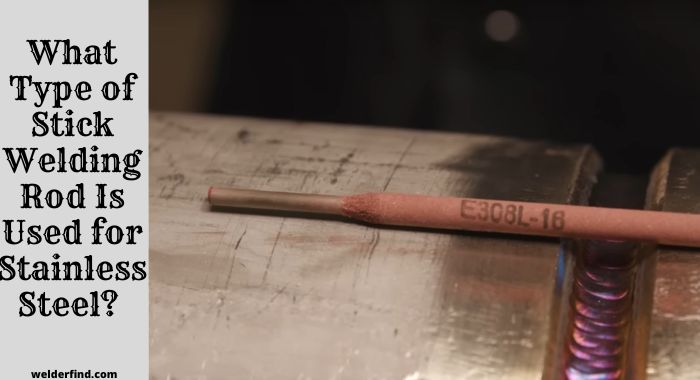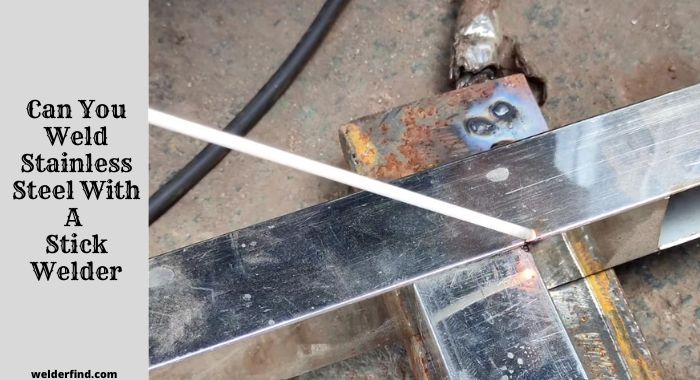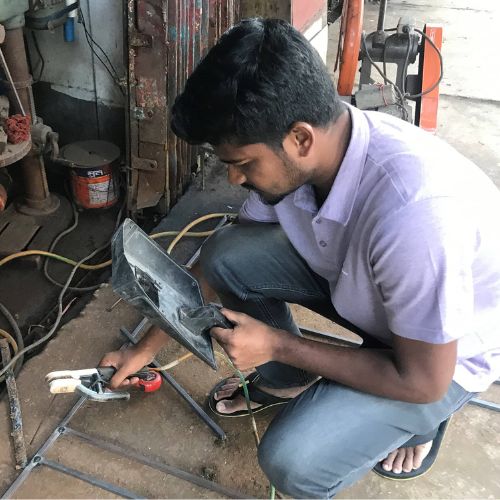Welding becomes a crucial job among the fresher because of the availability of multiple welding processes like MIG, Stick, TIG, and Flux-cored.
And this may knock a question to your mind – Can you weld stainless steel with a stick welder?
Today, I’ll give you the answer, including all the nooks and crannies regarding stick welding stainless steel.
Can Stainless Steel Be Stick Welded?
The answer is “yes.” In fact, stainless steel is such a material that you can weld through several arc welding methods, including TIG, MIG, Flux-cored, and stick welding.
But note that each will require to follow a specific guideline to get the welding task done. Plus, the result you’ll get from them will vary too.
What Polarity Is Used For Stick Welding Stainless Steel?
In the fewest possible words, polarity indicates the ideal current flow direction when you weld any material.
As for stick welding galvanized steel, stainless steel or mild steel, the “DCEP” or positive (+) polarity stick may work with most rods.
What Type Of Stick Welding Rod Is Used For Stainless Steel?

As a rule of thumb, you can choose the same welding rod grade to weld stainless steel or such material. For instance, a 308 welding rod can easily weld a stainless 304 grade.
In fact, there is nothing wrong even if you choose a higher grade (e.g., 316 rods for 304 steel) for welding either stainless or mild steel.
In contrast, if you accidentally choose a lower-grade welding rod to weld your higher-grade steel, your result will be unsatisfying.
Four different welding rods are available to meet your specific projects: mild steel electrode, low hydrogen electrode (carbon steel), Non-ISI grade electrode, and stainless steel electrode.
Among them, the stainless steel one is considered to be a high-selling item known for maintaining consistency during stainless steel weld.
How Thin Can You Stick Welding Stainless Steel?
According to my personal study and research, a 2.4mm (3/32-inch) mild steel is considered the thinnest in terms of stick welding.
Among the seasoned welders, 0.023 is counted as too thinner, especially if you want to weld an 18-gauge stainless steel material. In such a case, the thickness should be at least .030.
How Do You Weld Stainless Steel With A Stick Welder: Step-by-Step Guide
After going through every essential detail regarding stainless steel stick welding, you might wonder how to weld that, right?
If so, then you’re just a step away from getting the step-by-step guide:
Things Needed:
Just like other metals, you’ll need to gather the followings tools and stuff to weld stainless steel:
- Stick Welder
- Clamps
- Electrodes
- Welding Table
- Wire Brush/Grinder
- Safety Gears (e.g., helmet, goggles, gloves, leather apron, & boots)
Important Note: Proper ventilation is a must as stainless steel produces high HC (Hexavalent Chromium) gas. Keeping yourself well protected from that toxic gas is quite mandatory!
Step-1: Welder Preparation
The title says it all; you definitely need to pick up the right filler material/electrode and get it well-prepared for welding. That should be a top-quality alloy, which you can find from your nearest shops/other internet sources.
Since welders vary in several welding methods, let me show you the guide for mainly stick welding steel.
Electrode
Thankfully, electrodes are available in numerous flux coatings with stainless steel alloys. You must choose the size that matches your material.
Amperage Settings
You can find the amperage settings around the manual or the specific chart manufacturers give. That said, I’d suggest setting the range at the lower end.
If not, then the stick may eventually get hotter than usual due to the change of bead characteristics and arc. Let it get well-adjusted to a joint that is over 2-inch long or so.
Gel/Spray (Anti-spatter)
There is no surprise that the stick generates excessive spatter, which is an issue for stainless steel welding.
In this case, getting your hands on an anti-spatter spray or gel may help you get your workpiece well-prepared.
Step-2: Cleaning Up Stainless Steel
Once you’re entirely done preparing the welder, go for the preparation of stainless steel. In this case, the first job should be cleaning up the steel as it can’t withstand contamination in the way you want.
For this, clean it up by eliminating oil, rust, paint, and stuff like that.
Step-3: Proper Alignment
Here comes a tricky step where you need to align every single piece properly. Be sure the joints are entirely free from gaps.
If not, then you may need an excessive amount of electrode that adds extended heat to the weld.
After all, the weld can appear even better if you can maintain the width perfectly!
Step-4: Beveling the Edges
Finally, bevel each and every edge of the stainless steel with thicker pieces. In this way, you’re allowed to achieve an aesthetic and stronger weld.
Last Words!
The article “can you weld stainless steel with a stick welder” shows the acceptability of using stick welders.
On top of that, I’ve clarified the fact of how you can perform stick welding stainless steel in the best possible way!
So go through each step I’ve mentioned, and don’t forget to start welding after wearing safety dresses.
Frequently Asked Questions (F.A.Q):
Can you weld stainless steel with a normal welder?
Sometimes, a normal welder may let you weld stainless steel. But for this, you need to have plentiful knowledge of welding. And it’s equally true that typical welders won’t allow you to get the expected results.
Can you weld stainless steel with a regular steel rod?
A regular steel rod won’t be sufficient to weld stainless steel. The right one, especially the one that matches your material’s size, is crucial for optimal outcomes.

